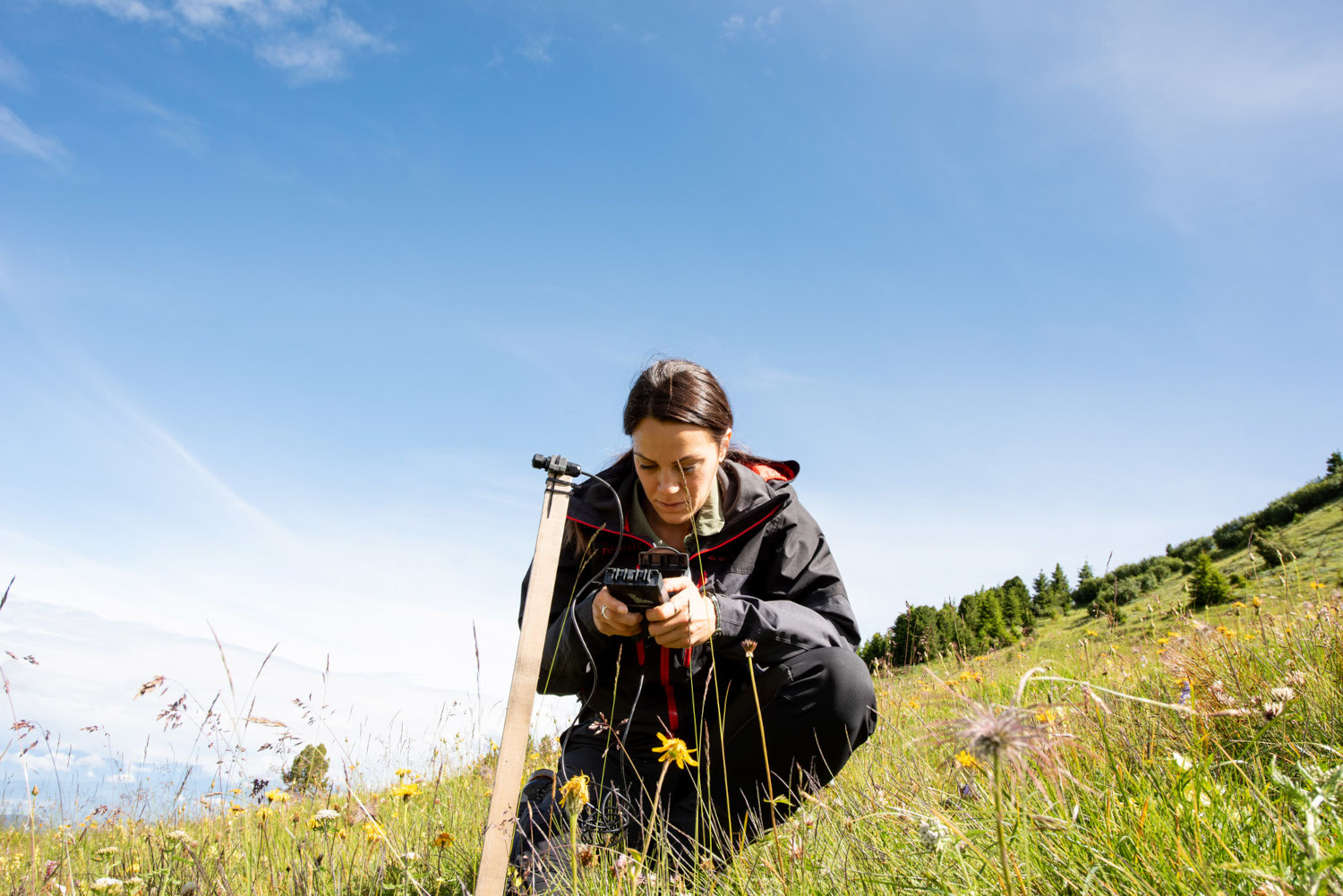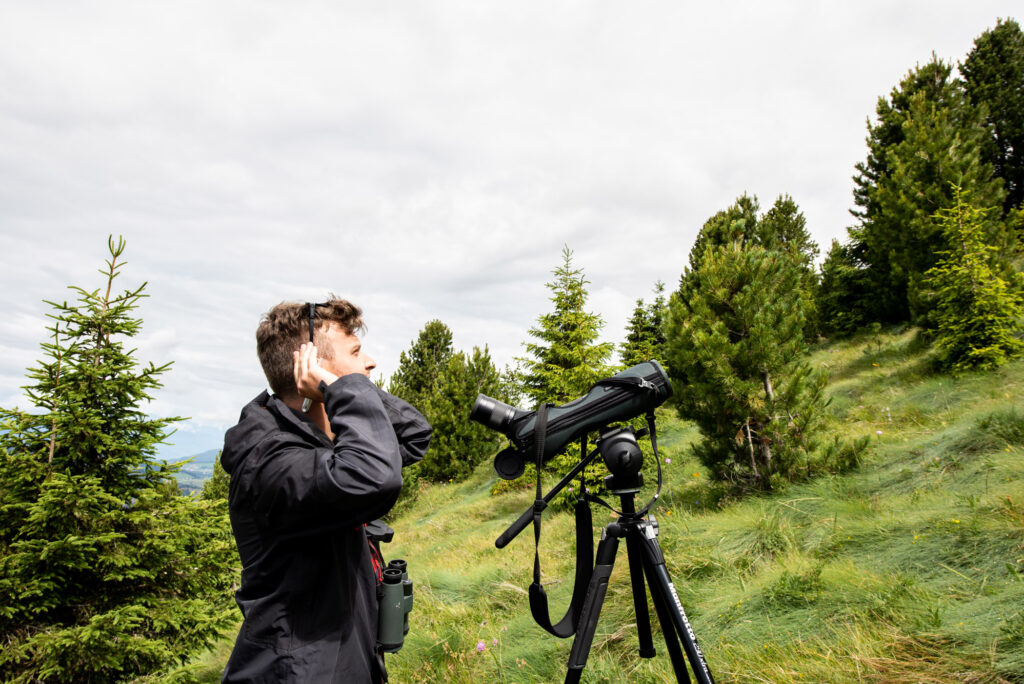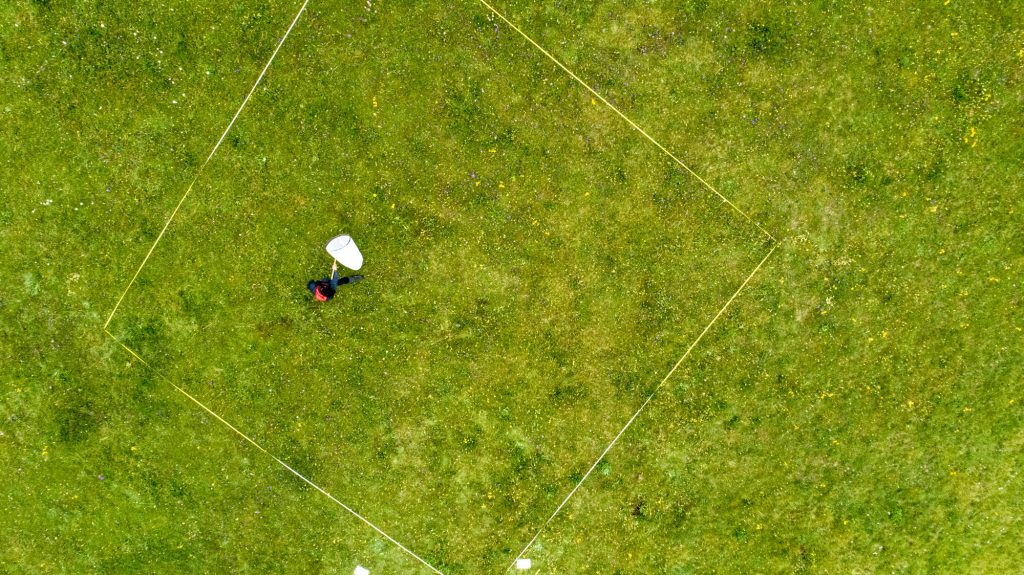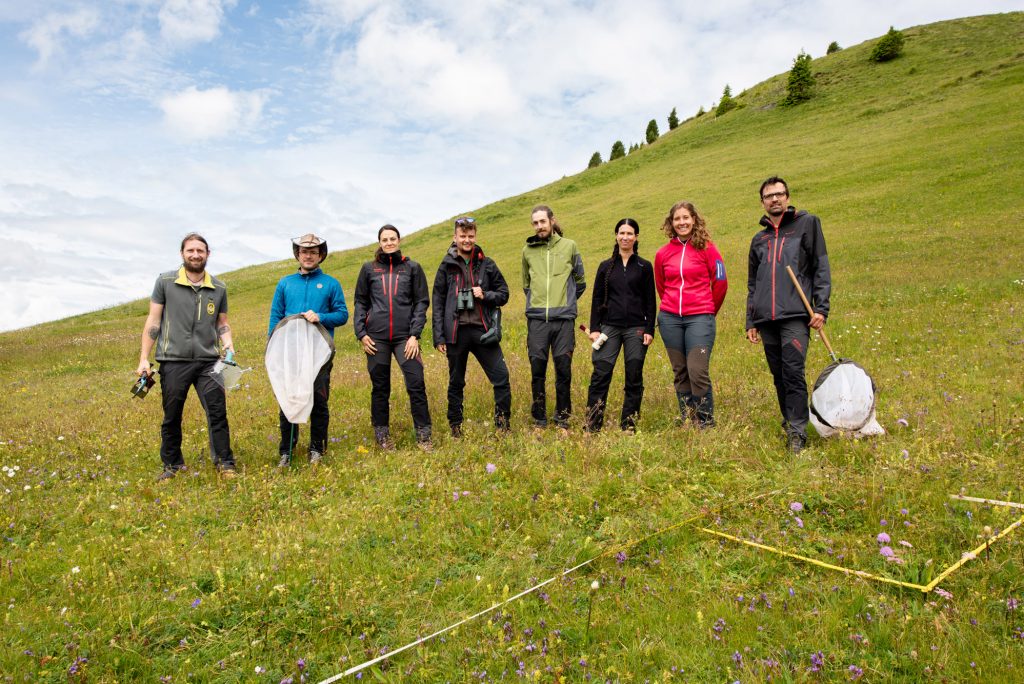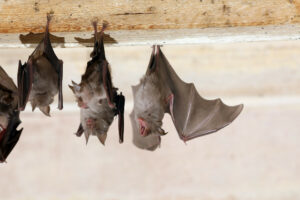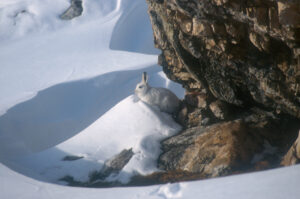They rush across steep mountain meadows in the midday sun with fishing nets to capture butterflies and grasshoppers; they stand in dewy forest clearings at five o’clock in the morning to identify bird calls; they scour every centimeter of soil to document the plants present – as part of the Biodiversity Monitoring South Tyrol, a team of researchers from Eurac Research is systematically surveying the biodiversity of the most important habitats in the country. 128 sites have already been investigated in two years and 1094 different species of vascular plants have been recorded, as well as 116 species of birds, 20 species of bats and 128 species of butterflies – and that is just a sample of the work done so far. What is already clear is that a cultural landscape consisting of diverse elements – for example, areas of meadow interspersed with hedges, trees, bodies of water or even a diverse farmyard – has a particularly high species diversity. The findings from two years of research were presented at a press conference today, September 8.
The focus of Biodiversity Monitoring South Tyrol is on species groups that react sensitively to changes in the landscape and to climate change, such as butterflies, grasshoppers, birds, bats and vascular plants. Every four or five years, exactly the same sites – 320 “on land” and 120 in flowing waters – will be studied again in order to draw conclusions about the development of biodiversity.
“South Tyrol is rich in biodiversity due to its location in the mountains at the interface between Mediterranean and temperate climates – we have a good starting position. But we also have the heavy use in favorable locations, for example in the valley floor, mainly by agriculture, settlement and road construction,” explains ecologist Ulrike Tappeiner, head of Biodiversity Monitoring South Tyrol. “We will only get an overview of the changes in South Tyrol’s biodiversity after several years. But already now, each survey year brings exciting results.” In fact, after two years of survey work, the 10-member research team can already identify a clear pattern: Survey points with many different habitats around them have a greater number of species. This includes settlement areas, for example a farmstead with a garden near a woodland, with stone walls, hedge rows and wetlands. For example, if an orchard borders a forest and a river, more species will be found here than in an orchard surrounded all around by other apple orchards. The same applies to monotonous meadow landscapes, such as those found in low mountain ranges. Land consolidation, i.e. when areas are merged or intervening structural elements such as hedges and rows of trees are removed, has a negative effect on biodiversity, as the surveys show. However, it is not only the number of individual habitats in a landscape that plays a role, but also their size and distribution: “We can clearly see from the surveyed sites that valuable habitats such as rough pastures or wetland habitats have a particularly positive effect on biodiversity if they also have a certain area size,” explains Andreas Hilpold from Eurac Research, coordinator of Biodiversity Monitoring South Tyrol. “A landscape in which a habitat type such as a vineyard dominates in terms of area will have greater biodiversity if niche habitats such as hedges or stone walls are also given a certain amount of space.”
Wetland habitats are a particularly important element for biodiversity, serving as a food source and drinking hole for wildlife. As the results so far show, wetland habitats are also home to most of the Red List species in South Tyrol, species that are in danger of disappearing in this country.
In addition to the 320 terrestrial sites, the research team started surveying 120 stream sites this year. Rivers and streams – spread across all elevations and parts of the country – are being studied to determine how many species of aquatic insects are present. Aquatic larvae in particular require very specific habitats, making them good indicators of ecologically valuable stream structure and water quality.
“Experts see overcoming the biodiversity crisis and climate change as major challenges for humanity. Therefore, we need continuous systematic monitoring also in South Tyrol to understand how fast biodiversity is changing and where such changes are particularly problematic,” summarizes Vito Zingerle, Director of Innovation, Research, University and Museums.
Eurac Research President Roland Psenner emphasizes: “With our research work in Biodiversity Monitoring South Tyrol, we provide the necessary basis for sustainable political decisions in spatial planning, agriculture and nature conservation.”
In 2019, Eurac Research began large-scale biodiversity monitoring on behalf of the South Tyrolean regional government. The most important partners for the monitoring are the Museum of Nature South Tyrol and the departments of Agriculture, and Nature, Landscape and Spatial Development. All collected data are stored centrally in the museum’s database. Plant and animal evidence that needs to be collected for more precise determinations is also integrated into the museum’s collection.

